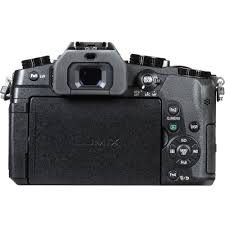The Panasonic Lumix DMC-G85KGW-K (also known as G80/G81 in some regions) is a mid-range Micro Four Thirds (MFT) mirrorless camera aimed at photography and videography enthusiasts. Launched as an upgrade to the popular G7, it offers weather-sealing, 5-axis in-body stabilization (IBIS), and 4K video recording, making it a strong contender for hobbyists and semi-professionals.
This review evaluates its build quality, performance, image quality, video capabilities, and usability after extended use.
Key Specifications
Sensor & Image Processing
- 16MP Live MOS Micro Four Thirds sensor
- Venus Engine image processor
- ISO Range: 200–25600 (expandable to 100–25600)
- 5-axis in-body image stabilization (IBIS)
Autofocus & Shooting
- Contrast-detection AF with Depth-from-Defocus (DFD) technology
- 49-point AF system
- 9 fps continuous shooting (with AF locked)
- 2.36M-dot OLED electronic viewfinder (EVF)
- 3.0-inch fully articulating touchscreen (1.04M dots)
Video Capabilities
- 4K UHD at 30p/24p (MP4, 100 Mbps)
- Full HD at 60p/30p (MP4, AVCHD)
- 3.5mm microphone input (no headphone jack)
- Unlimited recording time (no 30-minute limit)
Build & Connectivity
- Magnesium alloy front frame with splash/dust resistance
- Built-in Wi-Fi (802.11 b/g/n)
- Bluetooth 4.2 (for remote control via app)
- Micro-HDMI and Micro-USB ports
Battery & Storage
- DMW-BLC12 Lithium-ion battery (~330 shots per charge, CIPA rating)
- Single SD card slot (UHS-I compatible)
Design & Build Quality
The G85 features a robust, weather-sealed magnesium alloy body, making it more durable than entry-level mirrorless cameras. The deep grip ensures comfortable handling, even with larger lenses.
- Pros:
- Weather-sealing protects against dust and light rain.
- Articulating touchscreen is useful for vlogging and odd-angle shots.
- Tactile controls (dual dials, dedicated buttons) enhance usability.
- Cons:
- No headphone jack limits audio monitoring for videographers.
- Micro-USB (not USB-C) feels outdated for charging/data transfer.
Image Quality & Performance
Still Photography
- 16MP resolution is sufficient for most enthusiasts but lags behind 20MP+ competitors.
- Dynamic range is decent at base ISO but deteriorates beyond ISO 1600.
- IBIS works exceptionally well, allowing sharp handheld shots at slow shutter speeds.
- DFD autofocus is fast in good light but struggles in low light or fast action.
Low-Light Performance
- ISO 1600–3200 is usable with minor noise reduction.
- Beyond ISO 6400, noise becomes intrusive, limiting low-light capabilities.
Video Performance
The G85 excels as a budget 4K video camera, offering:
- 4K at 30p/24p (8-bit, 4:2:0 internally) with no recording limit.
- 5-axis stabilization works well for handheld shooting.
- Flat “Cinelike D” profile allows better color grading.
- Limitations:
- No 4K 60p or 10-bit recording.
- Rolling shutter is noticeable in fast pans.
- No headphone jack complicates audio monitoring.
Battery Life & Storage
- 330 shots per charge (CIPA) is average; carry a spare battery.
- Single SD slot is a limitation for professionals.
Pros & Cons
Pros
- Weather-sealed, durable build quality.
- 5-axis IBIS for stable handheld shooting.
- 4K video with no recording limit.
- Good ergonomics and tactile controls.
Cons
- 16MP sensor feels dated compared to newer 20MP+ MFT cameras.
- No headphone jack for audio monitoring.
- Micro-USB instead of USB-C.
- Contrast-based AF struggles in low light.
Final Verdict
The Panasonic G85 remains a solid choice for hybrid shooters who need:
- A rugged, weather-sealed body.
- Reliable 4K video with stabilization.
- Good handling and controls.
Who Should Buy It?
- Travel and landscape photographers.
- Budget videographers needing 4K with IBIS.
- Those upgrading from entry-level mirrorless cameras.
Alternatives to Consider
- Panasonic G95 (20MP, better video features).
- Olympus OM-D E-M5 Mark III (20MP, better AF).
